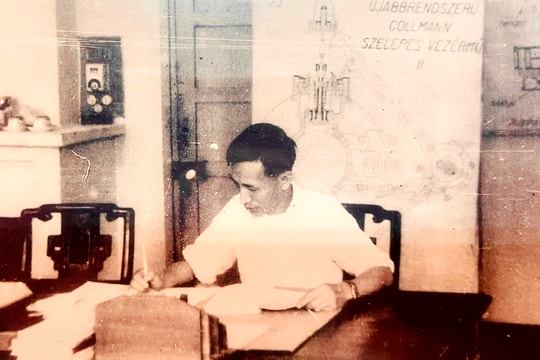Resistance iron furnace of patriotic overseas Vietnamese engineer from Nghe An
(Baonghean.vn)- Giving up a comfortable life in France and sacrificing his own happiness, engineer Vo Quy Huan, a native of Thanh Tung, Thanh Chuong, Nghe An, followed Uncle Ho back to the country to join the resistance war.
He is the authorblast furnace for iron smeltingThe country's first supplier of raw materials to produce weapons for our army in the resistance war against France, especiallyproduced tens of thousands of hoes, shovels, guns and ammunition for soldiers to use in the 1954 Dien Bien Phu campaign.
Designplanhighmiddle cast ironCon Cuong mountains and forests
In the exhibition space of the Military Zone 4 Museum in Vinh City (Nghe An), there are still very valuable relics. That is a collection of 3 mine shells, 2 grenade shells, 60mm mortars produced from cast iron materials of the Nhu Xuan blast furnace during the resistance war against the French. These artifacts were presented to the Museum by comrades in the Veterans Liaison Committee of the Military Zone 4 on the occasion of the 50th anniversary of the completion of the first iron blast furnace.
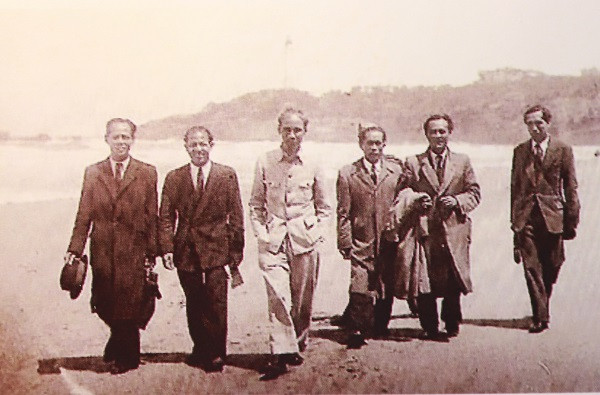 |
| Engineer Vo Quy Huan (far right) accompanied President Ho's delegation in France in 1946. |
During the 9 years of resistance against the French, Nghe An was the economic and cultural center of the free zone of Zone IV. Nestled in the middle of the enemy's siege, but also on the resilient land of Nghe An, the army and people fought bravely to both protect the rear and support the battlefield. Major Nguyen Huu Hoanh - an officer of the Museum of Military Zone 4 said: After the August Revolution in 1945, weapons for the armed forces were still very lacking, only a few units were equipped with weapons captured from the Security Guards and the Japanese - French army...
To meet the increasing demands of the resistance war, the Ministry of National Defense decided to organize in each war zone a military ordnance department specializing in finding raw materials for weapons production, adjusting similar types of guns into one unit for convenient ammunition replenishment; attaching importance to the manufacture of primitive weapons, including bows and arrows, spears, broadswords, flintlock guns, organizing weapons production facilities specializing in repairing guns, producing cast-iron grenade shells and mechanical parts of grenades.
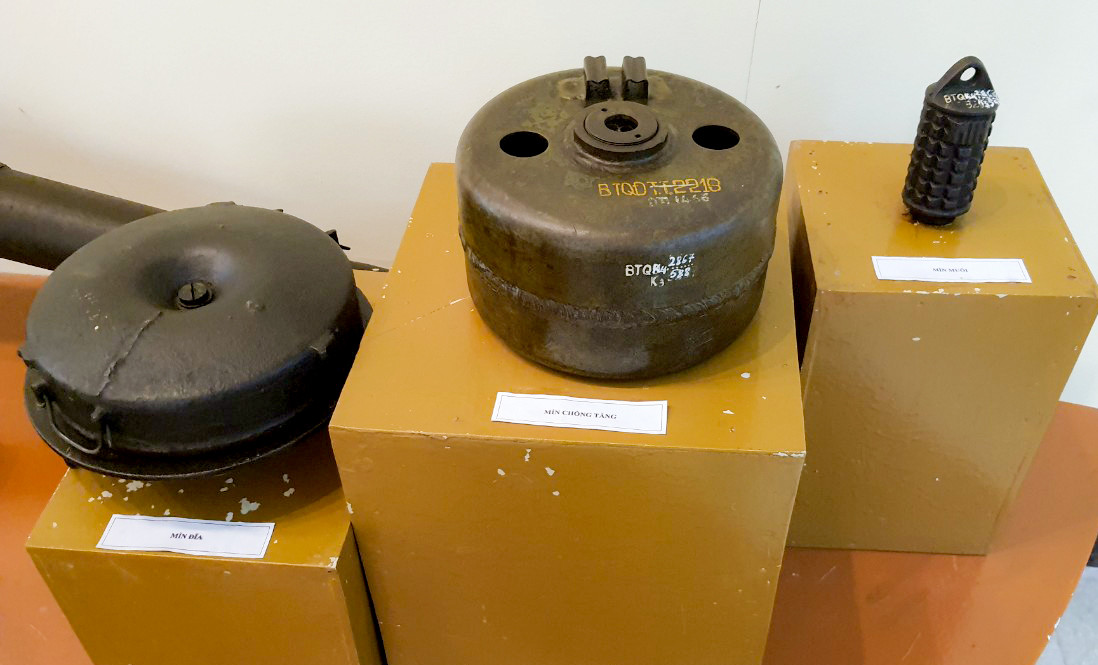 |
| Mines and grenades made from cast iron furnace materials designed by engineer Vo Quy Huan are on display at the Military Zone 4 Museum. Photo by Thanh Duy |
However, after the first years of the resistance war, the source of raw materials from dug-up cast iron pipes transported from cities, crushed, and re-melted in furnaces was exhausted; the source of cast iron pans and plowshares donated by the people was also exhausted. The war became increasingly fierce, requiring research into the production of cast iron on an industrial scale to manufacture a number of weapons such as mines and grenades to serve the resistance war. In that context, comrade Vo Nguyen Giap assigned the Military Ordnance Department to research and carry out the task of building a cast iron furnace to supply raw materials for weapons production.
In 1948, Cau Dat Economic Factory located in Con Cuong district (Nghe An) with engineer Vo Quy Huan as Director, later called the metal factory, completed the task of building a blast furnace for smelting iron. On the afternoon of November 15, 1948, the first experimental blast furnace designed and built by engineer Vo Quy Huan with the collaboration of technical staff produced the first batch of iron from Van Trinh iron ore, Nghi Loc district (Nghe An). The first products from this furnace, although modest, had great spiritual value for the mastery of science and technology of the Military Industry in the resistance war against France.
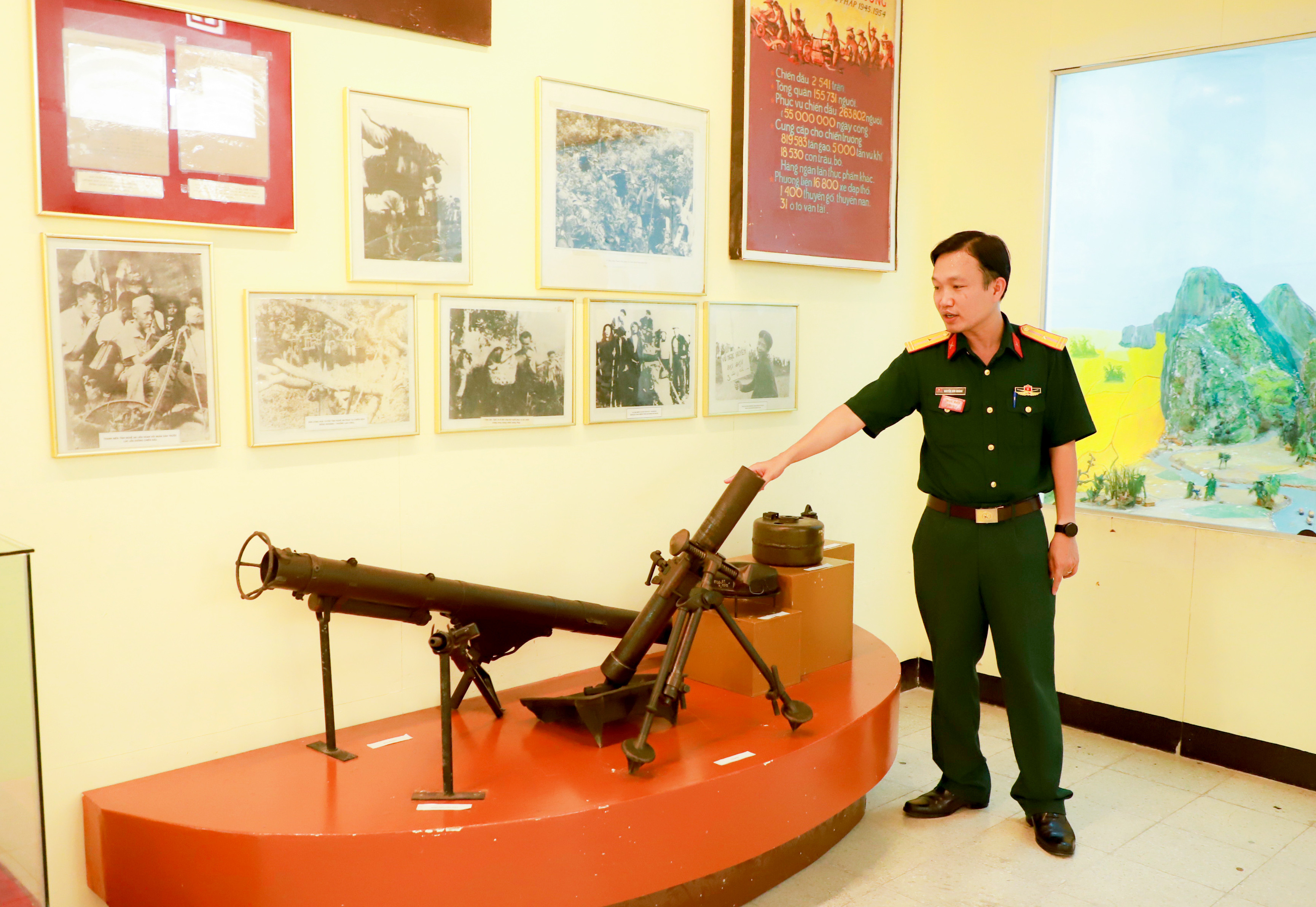 |
| Major Nguyen Huu Hoanh - an officer of the Military Region 4 Museum, introduces weapons used in the resistance war against the French made from Nhu Xuan iron furnace materials. Photo: TD |
In 1949, after learning that the Inter-Zone 4 Military Armament Service had successfully smelted industrial cast iron from a blast furnace, General Vo Nguyen Giap directly instructed engineer Vo Quy Huan to move the blast furnace to produce cast iron from Nghe An to Thanh Hoa, where there were abundant raw materials and more favorable transportation conditions. After 15 months of intensive work, technical officers and military armament workers successfully built the Nhu Xuan blast furnace. On December 19, 1951, the 5th anniversary of the national resistance war, the Nhu Xuan blast furnace produced its first batch of cast iron in Thanh Hoa.
From the date of construction until the end of 1954, while building and producing, the Nhu Xuan iron blast furnaces provided nearly 500 tons of iron for military factories to produce grenades, mortar shells, and mines; craft villages to produce plowshares, plowshares, cast iron pans, and cast iron pots to serve the resistance war; especially from this source of raw materials, factories were provided with tens of thousands of hoes and shovels for soldiers to use in the Dien Bien Phu campaign in 1954.
Onea life dedicated to the country
The successful construction and operation of the first iron blast furnace in our country is associated with the name of engineer Vo Quy Huan.
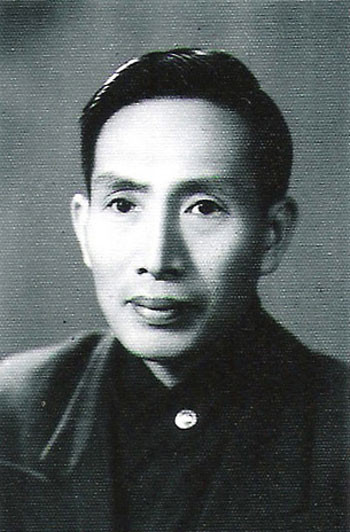 |
| Portrait of engineer Vo Quy Huan. |
He was born on November 7, 1912 in Yen Thanh hamlet, Thanh Tung commune, Thanh Chuong district, Nghe An province, in a Catholic family with a tradition of studiousness and patriotism. With a patriotic spirit, as a teenager, Vo Quy Huan participated in patriotic movements. In the years 1935-1937, Vo Quy Huan participated in the Popular Movement, working as Editor-in-Chief of the Indochina Activity Newspaper (L'activité Indochinoise) which published bilingually in Vietnamese and French. This was a progressive newspaper at the time, so it was closed by the French colonialists; Vo Quy Huan had to flee to France to study.
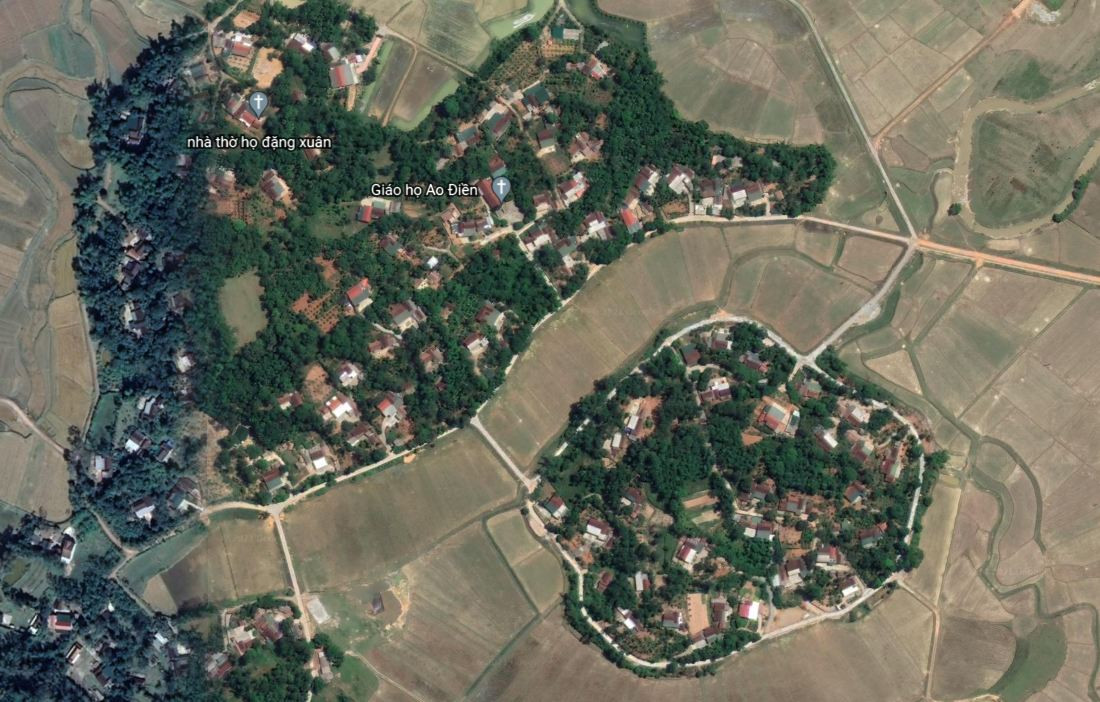 |
| A corner of Yen Thanh village, Thanh Tung commune, Thanh Chuong district, the hometown of Mr. Vo Quy Huan. |
He earned three engineering degrees in the fields of electromechanics, casting, and professional engineering. He then worked for the Compagnie Translatique (France) shipyard and several large factories. He was also the chief engineer at the Potef aircraft engine research and production factory... He joined the French General Confederation of Trade Unions (CGT), and was a member of the French Communist Party since 1939. He was active in the Association of Overseas Vietnamese in France, serving as both an interpreter and secretary of the Association.
In 1946, Uncle Ho visited France as Head of State of the Democratic Republic of Vietnam at the invitation of the French Government. His visit was one of the most important foreign affairs activities of the Vietnamese Government in the years 1945-1946 to save peace. Mr. Vo Quy Huan, who at that time was an engineer in the French Defense Industry Factory, had French nationality, married a French woman and had just had his first daughter, participated in welcoming the delegation and organized many activities to call on overseas Vietnamese and international friends to support Vietnam.
On September 18, 1946, from the Toulon naval port, Uncle Ho left France on the warship Dumont D'Urville to return home. On that ship, there were four more Vietnamese intellectuals: Tran Dai Nghia, Tran Huu Tuoc, Vo Quy Huan and Vo Dinh Quynh who followed him back to the country to join the resistance. Having said goodbye in a hurry, only having time to leave his first daughter with an acquaintance, while his wife was away, engineer Vo Quy Huan gave up his comfortable life, sacrificed his love for his wife, father and child to return to the sacred call of the Fatherland.
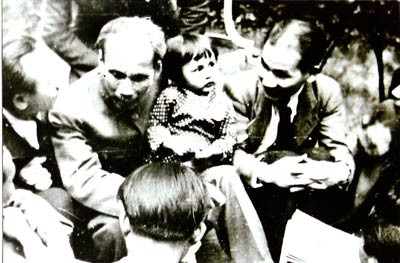 |
| Uncle Ho holds the daughter of engineer Vo Qui Huan (Paris, July 1946), who followed him back to the country. |
In the difficult circumstances of the country, he devoted himself, using his knowledge to research and manufacture materials to serve the production of weapons for the resistance of the country. The talented engineer from Nghe An was praised by Uncle Ho.
Standing next to the artifacts of weapons from the resistance war against the French, Major Nguyen Huu Hoanh was moved: Friends and colleagues assessed engineer Vo Quy Huan as a person who "until his last breath, he only knew how to use his profession to serve the country". He was the one who laid the foundation for the development of the country's metallurgical industry.
In 1967, the engineer who had a deep love for his country passed away with many unfinished ambitions and was deeply saddened by the fact that he had never seen his wife and daughter in France since returning home. Engineer Vo Quy Huan was posthumously awarded the Third Class Independence Medal and the First Class Independence Medal by the Party and the State. In 2013, the Nhu Xuan Iron Blast Furnace Relic was recognized as a National Historical Relic.

